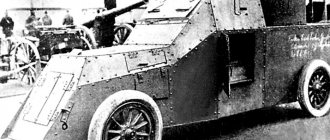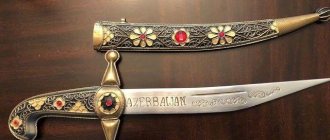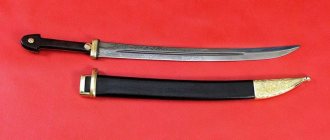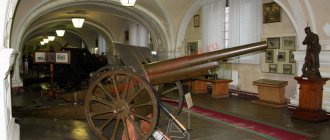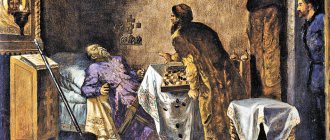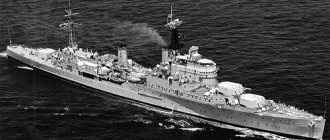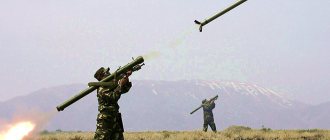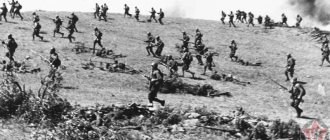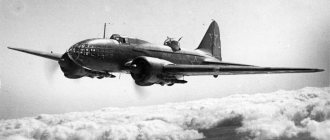The first hussars appeared in Hungary in the 15th century. Then King Matthias Korsch, who was called the winner of the Turks, announced the appointment of state service. It was called “Khus ar” from Khus - 20, and ar - money. This was the amount allocated for every twentieth nobleman on the list who was required to serve in the army.
The Hussars managed to survive for more than eighty years. The united Hungarian kingdom was dismembered in 1540. The western part with Slovakia went to the Austrian monarch. Then the march of the hussars across Europe began.
What the first hussars looked like
Initially, the hussars did not resemble those whose appearances are familiar to us from 19th-century paintings and modern films. The hussars wore thin forged metal chain mail and light helmets with chainmail headbands on their heads. In winter, they wore jackets - mentia, which they wore in other seasons on the left shoulder. Eagle or hawk wings were attached to them to protect the left hand, which held the reins, from saber strikes.
In the 16th century, the spread of hussarism went in two directions. The first was German. Austrian subjects, the hussars, were engaged in guarding the Turkish-Austrian border. The second is Polish. The Transylvanian prince Stefan Batory was elected krul (king) in 1576. With his coming, the hussars also came to the Polish-Lithuanian Commonwealth.
During the turmoil that came after the death of Boris Godunov during the time of False Dmitry, hussars appeared on the territory of Rus'. They were in the army of Jan Sapieha, who besieged the Trinity-Sergius Lavra during the “Seven Boyars”. They were with Hetman Khodkevich, who was trying to capture Moscow. However, they no longer had anything in common with the first Hungarian hussars.
Scottish Highland Leggings
Some claim that the first leggings appeared among the Scottish Highlanders around the 14th century. The ones who wear a kilt (Scottish skirt). They were called, of course, not leggings, but differently, but they were sewn like Russian leggings from the skin of elk or deer. And they looked more like leg warmers, as they were two separate parts (for each leg).
This is what Scottish leggings from the 1830s looked like:
Scottish leggings, 1830s
About hussars in Rus'
Light helmets were replaced by forged ones “with arrows” that protected the noses, and chain mail was replaced by armor. They had already become armored hussars, who became famous in battles with the Crimean Tatars and Turkish spagi. Mikhail Fedorovich liked this type of cavalry. Then recruited hussar squadrons appeared in Rus', which included Germans and Poles. During the time of Alexei Mikhailovich, domestic nobles began to appear in the hussar squadrons.
Even before Peter I, the hussars were dissolved in the Russian army. Peter had a chance to make an attempt to form hussar units, but to no avail. Later, Field Marshal Burchard Christopher von Minich had to return to this after the Ochakov and Crimean campaigns. And he succeeded.
During the time of Elizabeth Petrovna, Georgian, Serbian and Macedonian hussar regiments appeared. In those days, the hussar's costume was also formed. Warm mentiks (former mantles), a high hussar's hat, boots below the knees and the legendary tashki - bags for documentation - this was the hussar's costume in the second half of the 18th century. According to General Farmer, the hussars were obliged to attack with their usual impudence. Thus, for the first time, psychology was recorded in the Russian hussars.
During the time of Catherine II, the hussar regiments were mainly composed of Russian soldiers and officers. This tradition, enshrined by Paul I, was not violated until the fall of the empire itself. In the hussar regiments there were often people who were carriers of intellectual thinking at the elite level. Although, if you look at the names of the hussar regiments, you may not agree with this, or only partially.
Indian tights
North American Indians wore some kind of leggings-stockings made of leather. Each part was worn separately and attached to the belt.
North American Indian Leggings
North American Indian Leggings
Although we (the editors), looking at these photos, are not inclined to consider this a prototype of leggings. In our opinion, this creation of human hands is more reminiscent of trousers and over-the-knee boots. However, as we have already written, it is very easy to get lost in matters of history...
According to some statements, the Indians did not invent their leggings themselves, but adopted them from the Scottish highlanders when they sailed to America. This product received the English name leatherstocking (leather stockings). This name was even immortalized by the American writer James Fenimore Cooper in his The Leatherstocking Tales, which were published between 1827 and 1841.
There was some semblance of greaves in the attire of American cowboys. Some call these leggings one of the stages in the evolution of leggings. Leather greaves were worn mainly to protect against snake bites and thorny bushes. In addition, they did not wear out as quickly as canvas pants from constant horseback riding.
Legendary Russian hussars
Who was the first hussar legend? Most believe that this is Denis Davydov. However, in reality it was Nadezhda Durova. Her mother threw her out of the carriage because she was crying. Then the father picked her up and handed her over to the guardianship of the hussar, who raised the baby. As you know, childhood memories can be the most vivid, so sabers, drums, and horses left a noticeable mark on the girl’s memory.
So, already being a married woman, in 1806 she went to fight in the cavalry. Nadezhda was promoted to officer and awarded the Cross of St. George. She served in the Alexandria Hussars Regiment. Because of an affair with Miloradovich, she left the regiment and joined the lancers.
And only the second legendary figure in Russian hussarism can be considered Denis Davydov. He was the first to call himself a hussar. Being an officer in the Life Guards Cavalry Regiment, he did not stay in it for long. The ardent poet was made an army hussar for his creativity during translation. Thus, the Belarusian Hussar Regiment formed a hussar-poet, a romantic, a bully and a daredevil. And this image has its own imitators.
However, despite the brightness of the image and the magnificent poems of Davydov, the first hussar of the century, according to contemporaries, was a certain brave man Kulnev. In general, he was the prototype of all unmercenary hussars. Kulnev was remembered as a lion on the battlefield, and a lamb when the trumpets sounded the all-clear.
Petrov's daughter
It was to Elizaveta Petrovna that Russia owed the appearance of hussar regiments, where service took place on a regular basis. According to the staffing table, the Life Guards Hussar Regiment consisted of six squadrons, which included 834 lower ranks, under the command of 73 non-commissioned officers. Next in rank were the officers, of whom there were 37; 14 trumpeters, as well as 972 horses, were assigned to the regiment. In total, 1032 people served in the regiment.
The privilege of the hussars was permission to leave a mustache, unlike other branches of the army, where they strictly monitored the smoothness of the face. Serving members of the Life Guards Hussar Regiment were also exempt from sprinkling their hair with powder, but they were ordered to braid two braids in the area of their temples.
In honor of Empress Elizabeth, on the front of the tashka (flat leather bag) that each hussar had, there was the Empress’s monogram in the form of the letters “E.R.” made of twisted cords, as well as a crown.
Formation of the appearance of the hussars
It should not be surprising that the hussars are a symbol of an entire era. They personified the beginning of the 19th century, when the idea of hussarism was at its peak. At the same time, the legendary image of the hussar was formed. What was the hussar's mustache worth alone?
Hussarism was considered an endless revelry and desperate daring, stunning selflessness and constant lack of money, deliberate contempt for the accumulation of either crosses or ranks. At the same time, there is also a constant search for fame, love, liberation and games. Hussars were recognized heroes not only on the battlefields, but also in love battles.
They were the very male embodiment of love, they were its heroes. Neither novels, stories or vaudeville could do without them. The images took root in the cultural cross-section of the common people very easily and became a basic phenomenon in Russian cultural life.
Leggings in a men's suit of the Renaissance
The delightful era of the Renaissance, as evidenced by the paintings of famous painters, brought leggings into fashion for the nobility. Again, leggings were part of the men's wardrobe.
Men's leggings during the Renaissance
Here we already see what really looks like leggings in our understanding, that is, something like tight-fitting trousers.
Hussar costume from the period 1812
The hussar's costume in 1812 was significantly different in appearance from the costumes of other branches of cavalry. Its so obvious difference can be explained by the origin of this type of light cavalry. The appearance of hussars in the Russian army dates back to the middle of the 18th century. In those days, the hussars were mainly Serbs and Hungarians. With them the military uniform unique to them was brought. I liked the unusual and elegant hussar uniform, especially the ceremonial hussar uniform. And all this was able to take root in the Russian Empire.
Over the course of a century, they tried to modify this uniform several times, while maintaining the motifs characteristic only of it.
The military uniform of the hussars consisted mainly of:
- Dolomana;
- Mentika;
- Chakchir;
- Botikov;
- Quiver;
- Tashki;
- Hussar sash.
Some historians also attribute one of the items in horse gear to this - a saddle pad. Each regiment had its own colors of hussar uniform.
Dolomans (dulams, dolams, dolmans, dulmans) are short, waist-length, single-breasted jackets with stand-up low collars. On the chest, officer jackets were embroidered in fifteen rows with loops, the material for which was golden or silver cord. The soldiers' cords were made of yellow or grayish-white silk.
Mentiki (mentii) are exactly the same jackets as dolmans, but the collars, ends of the sides, the bottoms of the jackets, as well as the bottoms of the sleeves were trimmed with fur. Each individual hussar regiment had mentics of its own colors. And this despite the fact that the colors of the mentiks did not necessarily coincide with the colors of the dolmans.
Chakchirs (chikchirs) are straight-cut hussar pants with stripes at the bottom. They tucked themselves into their boots. The colors of the chakchirs were very diverse, each regiment had its own.
Boots were low (a little more than the center of the calves), narrow boots. The upper parts of the boots had figured cutouts with tassels in them. Spurs were put on the boots. The soldiers had spurs tinned with tin, and the officers had silver (gilded) spurs.
Trends of the times
Over the years, the hussar costume has undergone changes. Attempts to unify the military uniform and bring it into a certain order had an effect. The number of loops on a uniform could vary from 11 to 18 pieces. The number of cords and colors have also undergone changes. Each hussar regiment had its own differences in its uniform, from the color design to the color of the fur cuffs. The headdress also became uniform. The fur hat gave way to a shako, which can safely be called a real work of art.
The black cylinder was necessarily marked with a buttonhole and a cockade, which indicated the rank of a cavalryman and his affiliation with a military unit. The sultan crowned the headdress. The shako was attached to the head with a strap called scales. The hussar's hat became for a certain time the main distinguishing feature of a serviceman. The hussar shako continued to remain in this form for a long time. Only the height of the headdress and the color of the sultan changed.
Uniforms of the royal army
Starting from the 18th century, hussars received field and dress uniforms. For action in field and combat conditions, cavalrymen were assigned more discreet uniforms. Limited amount of metal and shiny parts. The height of the shako has been reduced and metal parts have been removed from the headdress. The color of the uniform was standardized. Instead of a multi-colored uniform, the field hussar uniform became green and gray. The ceremonial hussar uniform continued to remain in bright colors. It was customary for guards regiments to wear a military uniform in white or red. Leggings remained a mandatory attribute of ceremonial clothing, switching to the uniform of other branches of the military. In the field, it was customary to wear long, narrow or straight trousers.
Hussars XX century
In addition to the insignia on the shako and the color of the braid, the distinctive feature was the fur trim on the sleeves and cuffs of the dolman and mentic. It was customary for senior officers to wear beaver fur. Non-commissioned officers and corporals wore uniforms trimmed with silver fox. The rank and file wore dolmans decorated with hare fur.
What did the hussars wear in the field?
In marching conditions, in a combat situation, during training in the cold season, on top, and in the warm season, instead of chakchirs, the hussars wore gray leggings, which were hemmed with leather. Leggings were worn over boots. Chakchirs of hussars were expensive. Due to prolonged sitting in the saddle, the trousers quickly wore out and tore; in inclement weather, they soon became wet and dirty with earth flying from under the horses.
Putting on leggings saved the situation. So in reality, the hussars were different in battle. They did not look as elegant as in films like “War and Peace”, “Hussar Ballad”, etc.
It so happened that at the end of the 19th century the hussars had few places left to use their forces. With the advent of balloons, asphyxiating gases, and rapid-fire weapons, who needs cavalry? During the “world wars and revolutions” the hussarism was destined to bloom with its last farewell flowers. And this was the end of an era that was destined to collapse into oblivion. The hussars were left out of work.
Horse decoration
A separate line included the rules regarding the distinctive features of horses assigned to the Life Guards regiment. The owner was judged by the decoration of the horse, therefore the following were provided for cavalry horses:
The most serious importance was attached to the care of horses: both the success of the campaign and the very life of the hussar depended on it. Therefore, the so-called repair officers, elected from among the employees in this regiment, were in a special position and enjoyed trust and respect, since they had to deal with large sums of money collected for the purchase of horses.
You might be interested in: What is the acceleration of uniformly accelerated motion called? Formulas and solution to the problem
Recruits were taught horse riding and careful care of the horse entrusted to him, according to the “Instructions of the Colonel’s Cavalry Regiment,” which advised to take care of the horse, establish good relations with the animal, not beat it, give commands calmly, without shouting, feed it plenty, clean and clean up after it , do not wave your arms in front of your face.
Small decorative cylinder
A miniature top hat will serve as a stylish addition to a young lady’s carnival look or as a decorative element.
Such a miniature hat can be attached to your hair using bobby pins or hair clips.
To make such a headdress you will need:
- cardboard,
- decorative paper for decoration (coated, corrugated, colored, packaging),
- scissors,
- glue,
- simple pencil,
- ruler,
- decorative elements (ribbon, braid, lace).
In this case, there is no need to take measurements; the product is made without them. The pattern is drawn in any size; simple hat templates for beginners can be copied from the Internet.
Operating procedure.
- Draw a rectangle measuring 42 x 9 cm.
- Draw lines 2 cm from the long side of the rectangle at the top and bottom.
- Carefully cut small cloves to the mark on both sides of the rectangle.
- Glue the strip along the seam.
- Cut out a circle with a diameter of 20 cm. These are the margins. Glue them to the cloves.
- Cut out a circle with a diameter of 12 cm. This is the bottom of the hat. Glue it.
The cylinder is generally ready.
